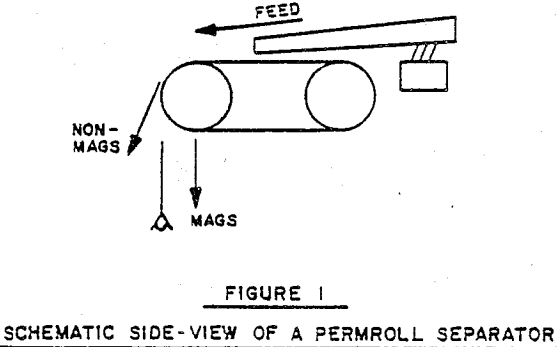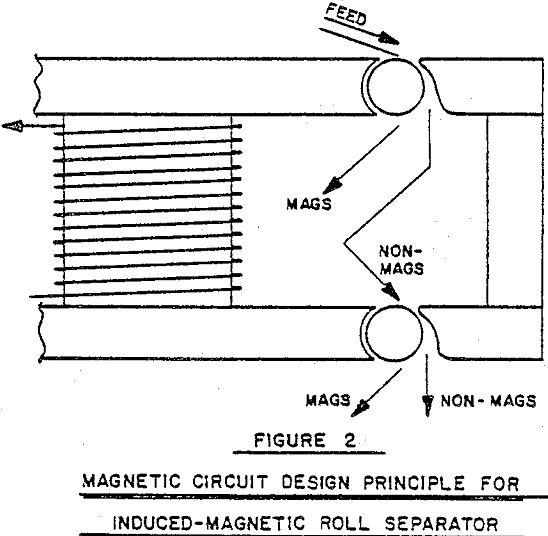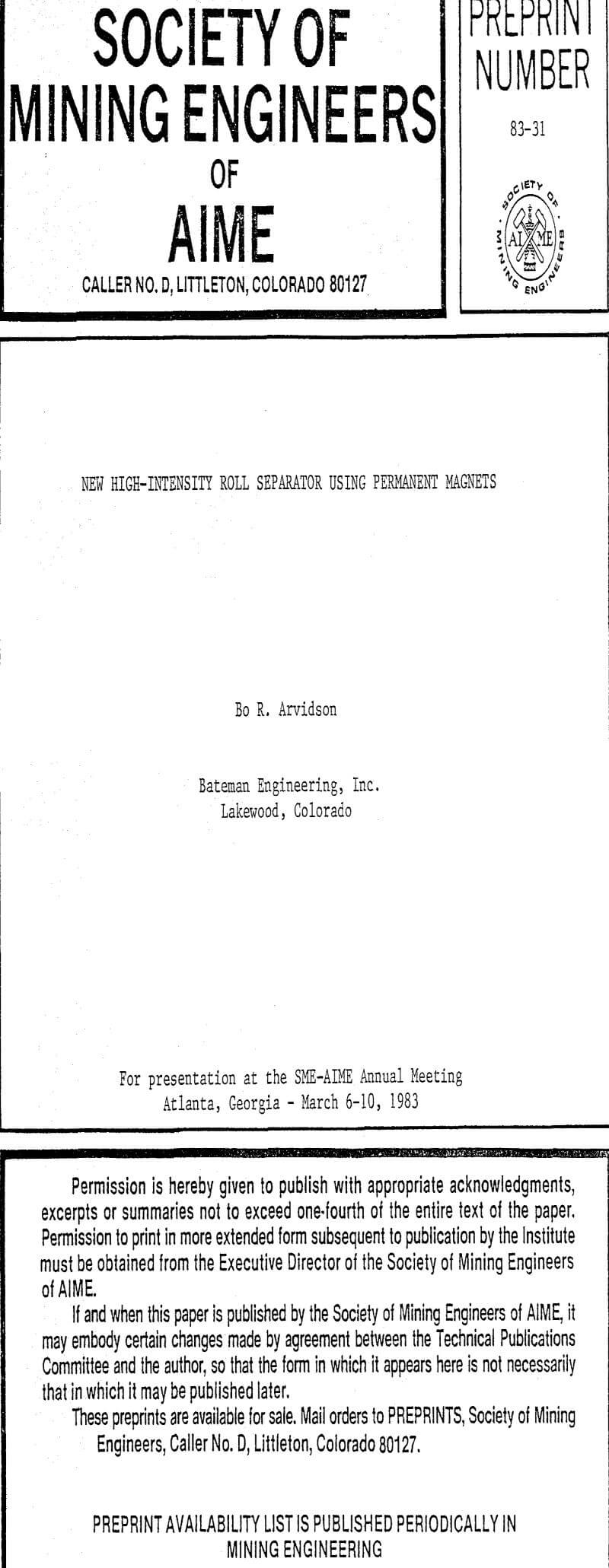Table of Contents
High-energy product permanent-magnet materials of rare-earth cobalt alloys are being used in applications where space or weight are at a premium cost. New applications like friction-free bearings are also made possible. However, such magnet materials have not been commercially used in magnetic separators until now due to the high cost for the overall magnetic flux generation relative to commonly used ceramic magnets or AlNiCo magnets.
Development of the PERMROLL Separator
About three years ago our company acquired the rights for a magnetic roll design that had been offered to many manufacturers of high-intensity magnetic roll separators of the conventional kind, namely electromagnetic induced roll. By using the unique properties of new high-energy product permanent-magnet materials, we managed to construct a roll consisting of relatively thin magnet rings with a magnetic metal ring interleaved between them. The resulting magnetic field was greater than what magnetic material producers first told us would be possible to achieve. Built into the design was also a very high magnetic field gradient, about two or three times greater compared to conventional induced roll separators.
The most important PERMROLL feature is the absence of an air-gap. Hence, even very large particles of several 10 millimeter size can be effectively processed. With design modifications, it would be possible to beneficiate even plus 100 millimeter particles. An additional advantage of perhaps greater importance is the ability to process a wide particle size range at very high flow rates, i.e. at high roll speeds.
Comparison with Induced Roll Separators
The induced magnetic roll separators (IMR) require a massive iron yoke to conduct the magnetic flux via the rotating roll and the associated airgaps.
The narrow air-gap required for high magnetic field is also apparent. A further complication to the problem with small air-gap is that the roll deflection, due to the strong magnetic force developed between the roll and the pole pieces, makes it necessary to maintain a minimum air-gap in addition to the gap required for unobstructed flow of particles.
Another characteristic of the induced roll separator is the eddy-current development in the roll. Lamination minimizes such currents, but they still generate strong counteracting magnetic fields so that roll rotation is resisted. To overcome the resistance, powerful drives must be used, generally requiring about 1 kw per roll. This power input dissipates in the form of heat development, which may have secondary effects such as bearing failure and even destruction of the roll. In contrast, the PERMROLL uses less than 5 percent of the power per roll unit.
PERMROLL Tests
A feed sample for magnetic separation was supplied by an andalusite producer using a conventional heavy-media process followed by a six-pass induced magnetic roll separation process. After two passes with the PERMROLL using the feed to the magnetic separation plant, at relatively high rate, the client’s representative observing the tests made the statement that the product was of better grade than the standard product from the plant. Fired bricks confirmed the statement.
In an existing andalusite process, everything coarser than 4 mm (5 mesh) was rejected as a screen oversize, since such coarse particles could not be economically processed with any commercially available method. The producer had approached all known suppliers of conventional high-intensity magnetic separators.
One client handpicked contamination (staurolite) particles from a finished andalusite product stockpile. Several stages of conventional high-intensity magnetic separations are required in the existing process. By using the PERMROLL, more than half of this material could be rejected.
Related posts:
8 Best Magnet Fishing Kit in 2021



